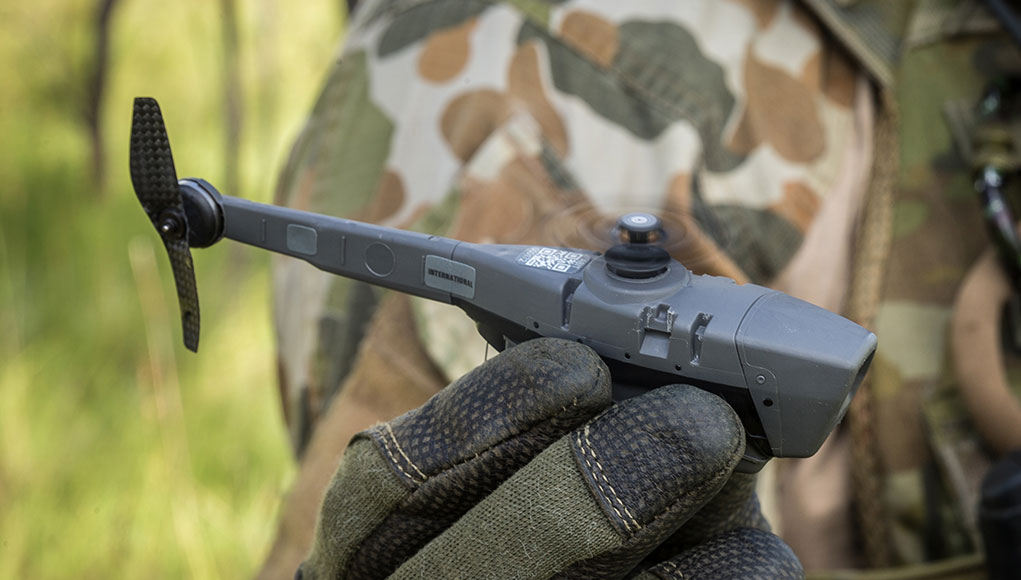From Defense Update:

Australian Army soldier Trooper Sam Menzies with a PD-100 Black Hornet Nano unmanned aircraft vehicle during training exercise at Shoalwater Bay Training Area, Queensland. Photo: Australian Defence
According to information released by FLIR Systems, the Black Hornet III helicopter weighs 32 grams, slightly more than previous models. It offers several improvements over previous versions, such as improved speed and distance, with the ability to fly two kilometers at speeds of over 21 km/h. Its sensors support sharper imaging processing, featuring the FLIR Lepton thermal microcamera core and a visible sensor, allowing greater image fidelity. An improved encrypted military-approved digital datalink supports beyond line-of-sight (BLOS) and operations indoors. The system supports the military standard ‘Android Tactical Assault Kit’ (ATAK), to interface with battlefield networks and distribute information to anyone on the network.

FLIR Systems offers the Black Hornet as a vehicular integrated system, where the crew operate the nano drone directly from the vehicle’s displays. Photo: Australian Defence
The nano helicopter flies autonomously to follow waypoints marked by the user on an aerial map, or controlled manually using an intuitive handle that comes with the kit. The system has a low acoustic signature and is virtually inaudible even from a short distance. At such a low weight it is inherently safe to fly near people, therefore, it can operate almost anywhere at any time without prior airspace coordination. As these miniature aerial vehicles have a minimally audible signature and visual profile, they are virtually undetectable, even from extremely short distances.



